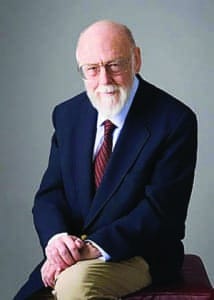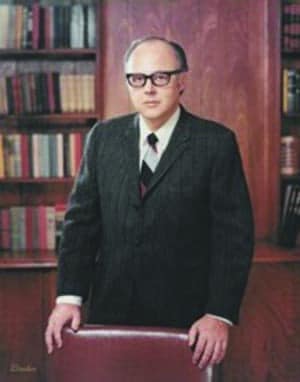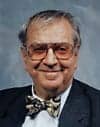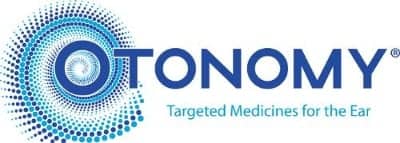Research | November 2015 Hearing Review
A memorable trip 55 years ago prompts thoughts about the perils of prognostication.
Looking back on a 1960 journey from his current vantage point, Dr Jerger recounts the many friendships made during a two-week trip overseas, and how they influenced his subsequent career. The professional camaraderie he shared with international colleagues—and the early technology he had the privilege of learning about from the eminent audiology experts of the day—illustrate the advantages of growing up professionally in a smaller world.
As the world grows more complex, predicting the future becomes ever more hazardous. In many arenas we have seen developments hardly conceived of only a few decades ago; consider, for example, the wonders of nanotechnology in advancing medical evaluation and diagnosis. And we have heard predictions that never actually happened; for example, the idea that the widespread availability of networks of lightning-fast computers and untold terabytes of memory would eliminate the need to fill out the same questionnaires, with the same malfunctioning ball point pens, at every visit to your doctor’s office. How have predictions about future trends in audiology fared?
This is the story of a European trip I once took in a smaller world 55 years ago and some predictions that were made about possible future trends in our profession. Some were dead on, others fairly wide of the mark.
In 1960 I was invited to present a paper at the International Congress of Audiology in Bonn, then the temporary capitol of the West German Republic. I followed it up with brief visits to Copenhagen, Stockholm, and Gothenburg. In the 1960s, the Scandinavian countries were leaders in European audiology. And in that smaller world I had the unique opportunity to meet many of the Scandinavian audiologists whose work we look back on today with admiration. This is an account of my experiences, the many European colleagues I met and talked with at length, and some lessons I learned about predicting the future of audiology.
On My Way
I departed from a relatively small airport on Chicago’s northwest side, which had been handling commercial flights for only a few years; the new field had been named in honor of Lt Edward O’Hare, a WWII Navy pilot and Medal of Honor winner. It was a popular prediction at the time that, while the new airport was convenient for people in the northern part of Chicago, it would never approach the activity of what was then the busiest airport in the nation, Midway International on Chicago’s south side. This prediction, like others to be discussed below, fell well short of the mark.
I flew overnight from Chicago to Frankfurt in the window seat of a Lufthansa Boeing 707. Next to me in the aisle seat was a portly gentleman who looked suspiciously like the Braumeister I had once met at the Pabst brewery in my home town of Milwaukee, Wisconsin. Both had a reddish face, short white hair, and a generous stomach. I expected at least some conversation, but surprisingly, my seatmate spoke not a single word for the first four hours of the flight. As morning approached, the rising sun came into view from our window. Now he stirred slightly, leaned over toward me, pointed out the window, and said “Schön, nicht var?”(pretty, not so?) He said not another word for the remainder of the flight.
After landing in Frankfurt I had a few hours to kill before the train left for Bonn; I seized the opportunity to visit the last home of Ludwig von Beethoven. Nearby, on a brick wall, I saw a surprising bit of graffiti in large letters: “Elvis, der grosste” (Elvis, the greatest). I was not so far from home after all.
Bonn
I picked up a VW rent-a-car at the airport and drove to my hotel, across the Rhine river in the town of Königswinter. Immediately after WWII this hotel had been the headquarters of the Allied High Command for the American, British, and French sectors of the partitioned republic, and still boasted most of the amenities suitable for high-ranking military personnel. It was my first experience with heated towel warmers and telephones in the bathroom; the view of the Rhine from my window was magnificent.
The next morning, at the convention center in Bonn, there was a message for me from Professor Dr Eberhardt Lüscher, chief of the otolaryngology department at the University Hospital in Basle, Switzerland. He was deservedly famous for his direct visualization, in 1929, of the contraction of the middle ear muscles through a perforated tympanic membrane. Some readers will recall Lüscher’s name from their study of the history of the intensity difference limen as a clinical tool. In the late 1940s and early 1950s, Lüscher and his student, Jozef Zwislocki, published a series of papers on the use of a sinusoidally amplitude modulated tone as an indirect measure of loudness recruitment. In order to make the technique available to other investigators, the Amplex company had developed a device which, when plugged into the output of an audiometer, provided variable amplitude modulation over about a 5 dB range. Testing proceeded by slowly turning a knob increasing or decreasing a continuously variable degree of amplitude modulation, in order to identify the threshold level at which modulation (“wobble”) was detectable. A value below the normal range was assumed to indicate the presence of loudness recruitment at the frequency under test. The rationale at the time, now largely discredited, was that a “too small” modulation threshold indicated that, at any given supra-threshold level, the loudness would be abnormally great because there would be more of the accumulating just-noticeable steps in loudness.
Correctly sensing a potential new direction for audiological research, my mentor at Northwestern, Ray Carhart, purchased one of the Amplex devices. As a graduate student I was assigned to investigate its potential. I ran it with a number of both normal-hearing and hearing-impaired individuals, and essentially confirmed the findings of Lüscher & Zwislocki. People with sensorineural hearing loss did respond to smaller depth of modulation, especially at higher frequencies where the hearing loss was greatest. But I was troubled by the fact that the test result depended on how rapidly you turned the dial. The slower you turned it, the smaller was the just-noticeable difference. This prompted me to devise the Short Increment Sensitivity Index (SISI) test, which avoided that confound by basing the test on a recognized psychophysical methodology. And it was this test, and the paper I published about it, that earned me the invitation to present at the Congress.
I met Dr Lüscher briefly at the meeting hall before our scheduled symposium and panel discussion on diagnostic audiometric tests. He was cordial, welcomed me to the Congress, invited me to visit his clinic in Basle, and asked whether I had met his former student and colleague, Dr Zwislocki, who was now at Syracuse University. I replied that I had had the pleasure during a previous meeting in Boston, and looked forward to renewing our friendship in Bonn.
My paper went well, but it was obvious that many of the tests I discussed (SISI, ABLB, Békèsy type) were unknown to many in the audience. During the subsequent question and answer period, an elderly, very distinguished German professor raised his hand. A hush fell over the audience in apparent deference to his stature in the profession. Quickly recognized by the chair, he rose slowly to his feet, adjusted his pince-nez glasses, and asked in heavily accented English, “Vot iz SISI?”
My overall impression from this session in the Congress was that it would to take awhile for our European colleagues to catch up to American developments in the diagnostic arena. Actually, it took a good deal less time than I would have then predicted; and, as my subsequent visits in Scandinavia were to demonstrate, they were already well ahead of us in what is now called “immittance audiometry.”
Later that day, Joe Zwislocki, who knew that I had a rental car, asked if we might drive over to a nearby small airport to meet his wife who was arriving by helicopter. I agreed and we set off. The airport site where the helicopter landed had the delightful German name, “Hubschrauber Sitz Platz” (Helicopter Sitting Place).
Copenhagen
I arrived in Copenhagen on a cold, drizzly day, but was warmly welcomed to the University Ear Clinic of the Rigshospitalet (Municipal Hospital) by Dr HW Ewertsen, an otolaryngologist who specialized in audiology. His particular interest at that time was speech audiometry. The Danes had developed their own word lists and were using them extensively, but Ewertsen wanted to show me his own variation on the conventional testing protocol, combining the auditory signal with a video presentation of the talker’s face. I can paraphrase his enthusiastic argument as follows:
“Now, Dr Jerger,” he began, “is it not the case that, in most speech communication situations, especially between two people, the listener is watching the talker’s face?” I nodded my assent and he quickly continued. “Why, then, when we are testing speech understanding, with or without amplification, do we rob the listener of these real-life cues? Is it not the case that visual cues help auditory cues in total word perception?” Before I could mutter an answer he took my arm, walked me to his testing suite and showed me his simple arrangement of video-camera-in-the-control-room and video-monitor-in-the-test-chamber. Since video recording was not yet widely available the test setup was, necessarily, by live-voice presentation.
“Someday soon,” he continued, “We will have ways of recording all of this, the audio and the video, simultaneously so that the live-voice presentation of the words will not be necessary. Then you will see the dawn of a new day in audiology, when the communication act is evaluated in a more natural and valid way.”
Later, in my hotel room, I turned all this over in my mind and concluded that his argument was strong. Indeed, I thought, some day we will certainly have the capability of simultaneously recording not only the auditory portion of the talker’s message, but the accompanying visual image of the talker’s face as well. In fact, I thought, given the promise of digital coding of both auditory and visual signals in their very earliest stages of development, we should be able to contrive speech audiometric test measures of any desired degree of complexity. Surely, I predicted to myself, audiologists will see the merit of exploiting such test scenes in perhaps just a few decades. I visualized advances in speech audiometry miles and miles beyond SRT and PBmax. Regrettably, I was appallingly wrong on this prediction, too.
On that same visit to the University Ear Clinic, Ewertsen showed me the area in which Otto Metz had, in the early 1940s, developed his device for detecting the contraction of the middle ear muscles of the human ear. His “impedance bridge,” reported in 1946, detected the bilateral contraction indirectly by noting a change in the impedance characteristic of the middle ear transmission system upon presentation of a loud sound to the ear opposite the ear coupled to the impedance bridge circuitry. Follow-up studies by Otto Jepsen, at the University Ear Clinic, confirmed the validity of the technique. Few in the US, in those days, would have predicted the impact that this procedure would have in diagnostic evaluation in the years to come.
Ewertsen then demonstrated, on my own right ear, a new device developed by Danish investigators Knud Terkildsen and S. Scott-Nielsen, which extended the impedance bridge concept to include actual measures of the absolute impedance/immittance of the middle ear mechanism. They called it an “impedancemeter.” It also included a calibrated air pump, which permitted the assessment of the effects of both positive and negative pressure on the impedance in the plane of the tympanic membrane. They proposed to call the resultant graph of impedance vs air pressure a “tympanogram.” Their device was marketed by the Madsen company as Model ZO 60. A later revision, the Model ZO 70, was widely distributed in the US beginning in the early 1970s.
Before leaving Denmark I visited Ole Bentzen at his home in Aarhus. The use of binaural aids was still in its infancy in 1960, but Bentzen was already an enthusiastic advocate who predicted that in a few years “binaurals” would be the talk of the profession. We met again, some years later, at a course in Australia, and he reminded me, in his Danish accented English, of his earlier prediction. “You remember, Yim, what I say in Aarhus when you visit in 1960?” Ole Bentzen was an absolutely wonderful teacher and human being. To know him was to love everything about him.
Stockholm
I left Copenhagen in a drizzly rain and arrived at the Stockholm airport in an even drizzlier rain. But I was warmly welcomed at the Karolinska Institute by Bengt Barr and Ingmar Klockhoff.
Barr and his colleague, Erik Wedenberg, were in the midst of a series of studies on children with hearing loss; Klockhoff was pursuing pioneering studies of the middle ear muscle reflexes. He presciently predicted that such reflexes would come to play an important role in audiological evaluation in the years to come. Although discussions with these leaders of Swedish audiology were informative and stimulating, the high point of the visit occurred at a party in my honor hosted by Klockhoff in his apartment in Uppsala, just north of Stockholm. Klockhoff took me to a window, pointed to the house next door, and informed me that this was the house in which Anders Celsius lived while he developed the Centigrade scale of temperature early in the 18th century.
Gothenburg
Here I met, for the first time, Gunnar Liden and his lovely wife, Nina. The very first day of my visit they had organized a welcoming party for me at their apartment.
As I checked into my hotel, I had noticed a flower shop just around the corner. On the way to the event I visited the shop and bought a bouquet of 12 red roses. Upon arrival, I presented them to Nina with my thanks for her gracious hospitality. At first she appeared somewhat stunned, but then took the flowers, thanked me, and hurried away with them.
Only much later did I learn that Swedes had an elaborate coding system in which subtle messages were conveyed by the choice of flowers and their colors. A dozen red roses, of course, coded the desire to have an illicit affair with the recipient. I have never totally recovered from that embarrassing faux pas.
Gunnar was, at that time, just beginning his work with tympanograms and researching their potential. His pioneering efforts, published in 1969, stimulated my own interest in what clinical information could be mined from the various configurations he first identified.
Epilogue
A few days after my return to Evanston, I was invited to deliver a report of my trip to the audiology faculty and graduate students at Northwestern. I spent most of the hour on what I predicted would become a new clinical and research direction in the US, based on the pioneering efforts by the Danes and Swedes, in developing the tools and techniques to measure tympanograms and the acoustic reflex. Regrettably, my audience was singularly unimpressed.
What can we conclude after a lapse of 55 years? Not all predictions were dead on. Measuring the transmission characteristics of the middle ear system (Metz, Jepsen, Terkildsen, Scott-Nielsen, Liden, Klockhoff), especially its intrinsic muscular dynamics, has certainly fulfilled our earliest expectations. What we now call “immittance audiometry” has proven its value many times over. The same conclusion certainly holds for binaural aids. With only few exceptions, they have proven their worth throughout the audiological world.
After more than half a century, the real potential of speech audiometry to simulate reality still awaits widespread usage. Ewertsen’s view of the simultaneous presentation of both the auditory and accompanying visual cues to a speech message has failed to nudge the audiological community off its WWII image of this vital arena of audiological measurement. Looking back at that 1960 journey, and remembering the many friendships made over those two weeks and how they influenced my subsequent career, I am sure that I had an advantage by growing up professionally in a smaller world.
Acknowledgement

James Jerger, PhD, is Distinguished Scholar-in-Residence (retired), School of Behavioral and Brain Sciences, at the University of Texas at Dallas. He now enjoys retirement in Lake Oswego, Ore.
Correspondence may be addressed to Dr Jerger at: [email protected]
Original citation for this article: Jerger J. An Audiological Journey in a Smaller World. Hearing Review. 2015;22(11):20.?










